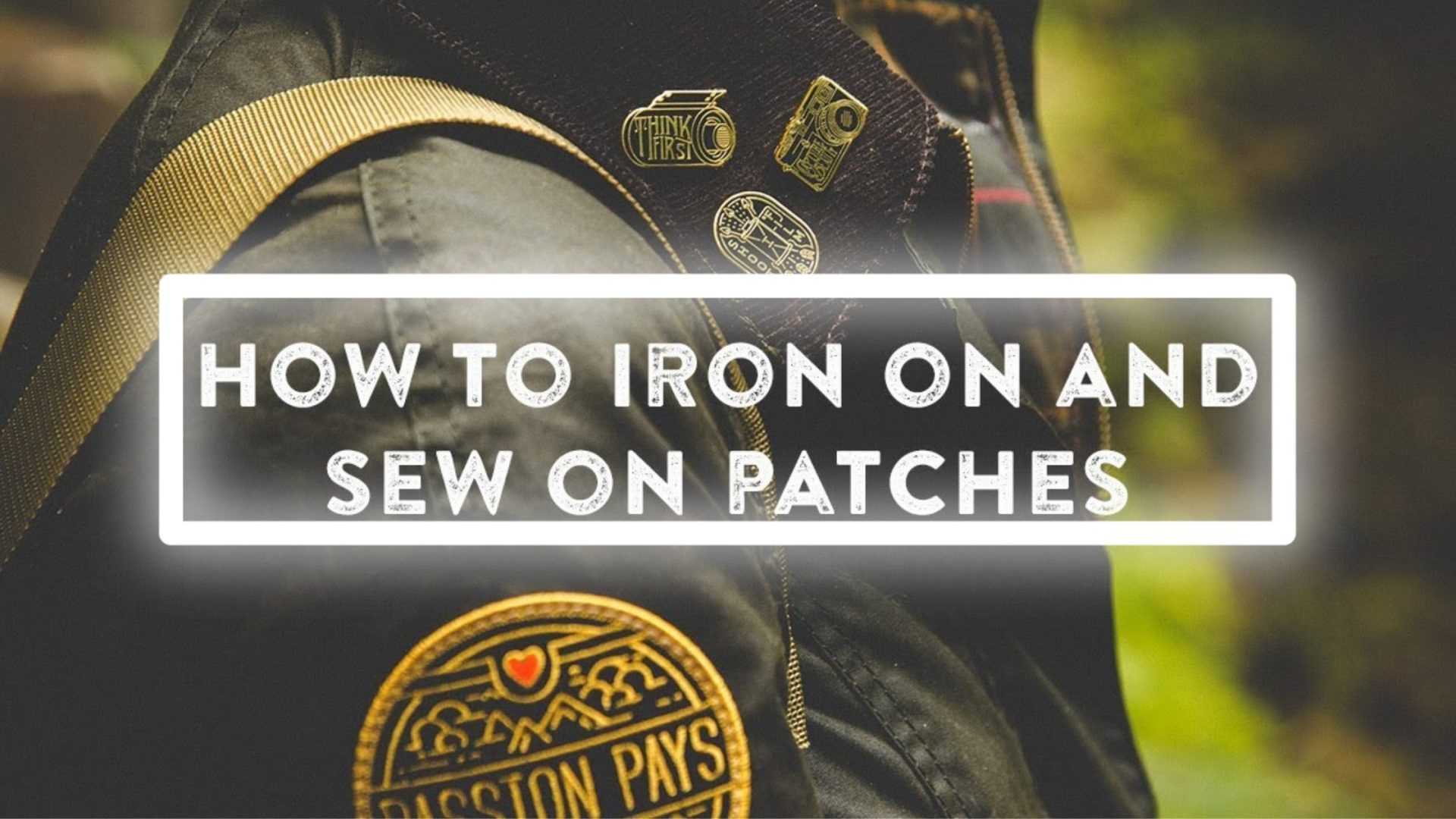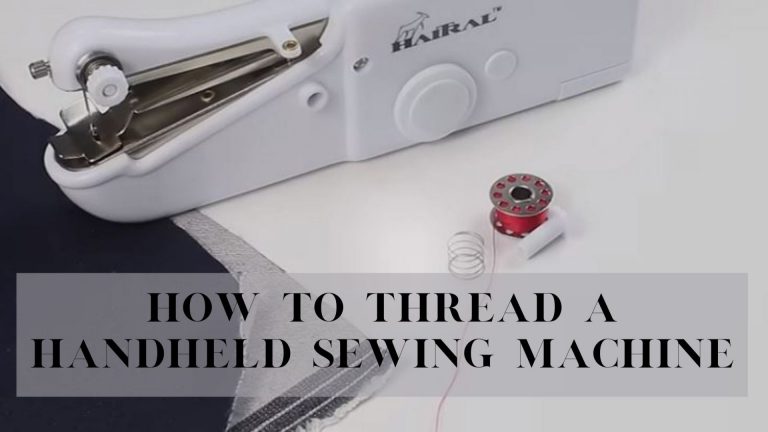Can You Iron On Patches to Leather? [Find Out]
You definitely can apply iron-on patches to leather. Whether you want to go for a super-cool shirt or punk leather jacket, patches are your best friend. They can be used as a finished look for a leather vest or to add a splash of colour to your ensemble. They are both practical, fashionable and are particularly popular among the younger generation.
Patches can be attached to leather jackets in a variety of methods. They can be ironed or sewed on. This process is the quickest and most common way to customise your wardrobe. That is why you should understand how to properly attach patches to your leather jacket or other items made of leather.
How to Iron-on patches on Leather?
Although sewing patches onto the leather is a common technique of application, you may instead use an iron to attach patches on the leather without hurting it. Instead of using the iron’s warmth, you employ it as a pressing instrument with this technique.
Since irons have smooth surfaces, they glide smoothly over leather patches while merely pressing.
Steps to Put Patches on Leather
- Determine which patches you wish to iron onto your clothing. Patches can be purchased or custom-made.
- Gather all of the tools you will need for this procedure. Sticky adhesives, easy-to-stick textiles, an iron, and a piece of clothing are all included.
- Iron the area of the leather material on which the patch will be applied. This will warm it up and make it easier for the sticky adhesive to adhere.
- Spread the adhesive to the patch and let it dry. Place the patch on the hot jacket region with the adhesive side down first.
- Place a piece of cloth fabric over the patch and press it in place. Since the patch fabric may not be suited for direct ironing, you must iron in this manner. For a few seconds, iron the patch. To enhance the glue, turn off the iron and keep it on top of the patch for a few minutes.
- Certain patches may not be suitable for use with glue. Stitch another piece of cloth to the base of the patch in this situation. Apply the glue to this fabric before ironing it to the leather clothing.
- Leather patches ironed on are not lasting. They’ll stick around for a while before peeling off. To prevent this, the patch should be sewn onto the leather jacket or other clothing.
How to Glue Patches on Leather?
Adding patches to leather with fabric glue is a quick and easy process. If you prefer to use fabric glue, make sure you get the right kind, which is a heavy-duty lasting fabric adhesive because other glues might stain the leather. After a few weeks of washing and wearing, the glue may fall out.
Starting off with flipping the patch over to reveal the back before beginning the glueing process. Follow the manufacturer’s directions for applying the glue. Certain adhesives must only be used on one of the things being adhered to, while others must be used on both. Before materials may be joined, some glues need to become tacky or partly dry.
Next, carefully apply the patch to the desired area of the leather. Make sure the adhesive doesn’t get on any other sections of the leather. You can make any necessary changes as well.
Furthermore, when you move the patch to a different region of the material, the glue will leave a mark, and you can then push down on the patch. On the patch, place a hefty, flat object. Allow 48 hours for the glue to set with the large weight in place.
How to Sew Patches on Leather?
Sewing patches on leather with a machine is the safest and quickest way to add beautiful patch patterns to your fabric. It’ll save you a lot of time because each patch just takes about five minutes to make.
To begin, gather your equipment, which should include safety pins or glue, scissors, threads, and the patch you want to use. Firstly, arrange the sewing machine. Use upholstery thread made entirely of nylon and polyester.
To work with leather, change the parameters. A pointed leather needle is considerably better. Place the patch on your leather material and secure it. This can be done using plain pins or spray glue. If you’re going to use the latter, make sure to spray evenly and lightly.
Sew all the way around the patch. Begin at one of the many corners. It needs to be sewed onto the fabric properly, so curves should be approached with caution.
Afterwards, stitch the round patch adjacent to the patch’s edge, turning it along with the fabric as you go. Cut the excess threads after you’ve finished. And that’s all there is to it.
How to Sew Patches on Leather by Hand?
This is the most standard method of sewing, yet it gives you the most satisfaction. Sewing each leather patch by hand should take no more than 25 to 30 minutes. Needles, patches, scissors, threads, and tape are all the essential equipment needed.
To put on the reverse of the patch, you’ll need some wrapped up tape. Hence, you could use masking tape. Don’t ever use double-sided tape on leather since it seems to stick to it.
Now you can firmly apply the patch to the leather material. After threading the needle, use 100 percent polyester or nylon thread and tie it. Push the needle up through the rear of the leather, then out into the front of the patch.
Push the needle back through the leather, aligning it with the patch’s outside binding. Your initial whipstitch is now complete. Also, you have the option of using a running stitch or a whipstitch. Keep whipstitching around the patch completely.
In fact, make sure your stitches are small, tight, and close together. By sliding your finger into the opening underneath the patch, you can remove the tape.
Finally, stitch all the way around your patch. The finishing stitch must be on the inside of the material or on the backside of the leather. Finish by forming a tight knot in the thread.
How to Sew Patches on Leather Jackets?
Hand sewing or using a machine with a heavy-duty needle is the most secure way to attach patches to your jacket. If you choose to sew a patch on a leather jacket, keep in mind that if you remove the patch, your garment will have gaps where the patches used to be. The needle will make gaps when you sew.
It is also crucial to utilize clear polyester or nylon thread and a leather-specific needle. Cotton threads should not be used to stitch leather because the solvents used to colour the leather will destroy the cotton thread.
First, place your jacket on the table and plan wherever you want your patches to go. Once you’ve decided where you want your patch to go, use pins or tape to secure it to the leather. Begin sewing on your focus point once you’ve decided on one. After stitching the patch onto your leather jacket, detach the pins.
FAQs
How to put patches on leather bags?
- Patching a leather bag can be done in the traditional way of sewing. First place the bag on a non-abrasive flat surface.
- After this glue the patch by following the above mentioned guide.
- Next you will need to sew the patch by placing holes for the needle and passing thread through it.
- To avoid the needle poking through the bag, place a piece of scrap leather and a heavy object to push the needle through the holes.
How to put patches on leather shoes?
In order to put patches on your leather shoes, you need to follow the exact steps as mentioned above. Except that you have to measure and cut the patch according to the placement. Also, make sure to carve out some patterns and polish the patch before glueing it.
Does patch attach work on leather?
From my personal experience, Patch attachments are not suitable to work on leather. It is a quick fabric glue to attach any patch. Patch attach is a dry, cleanable glue which can be washed off easily with water. Instead you should use gorilla glue, craft glue for firm results.
What do you need to sew patches on leather?
The basic tools you will need to sew patches on leather are glue, scissor, thread, needle and the patch itself. If you’re sewing two pieces of leather together, you will need a line of tape between the pieces. The tapes will make perfect seams and remain as allowance i.e. you don’t have to remove them afterwards.
Bottom Line
If you don’t want to iron the patches on the leather, you can always sew it as explained above. You must take your time and follow the complete guide for better results because the glue comes off sometimes.
With that said, it is important to use high quality adhesives and sewing the patch then. Customizing your leather bags and jackets is how you can make your style elegant in your way. With my practice and research given in this guide, hope you will be able to style your own leather items.




![How to Use Speedy Stitcher [Expert’s Tips and Guide]](https://stitchingnerd.com/wp-content/uploads/2021/12/How-to-Use-Speedy-Stitcher-768x432.jpg)
![4 Easy Methods to Stitch Leather Together [Complete Guide]](https://stitchingnerd.com/wp-content/uploads/2021/08/How-to-Sew-Leather-on-a-Sewing-Machine-1.jpg)

